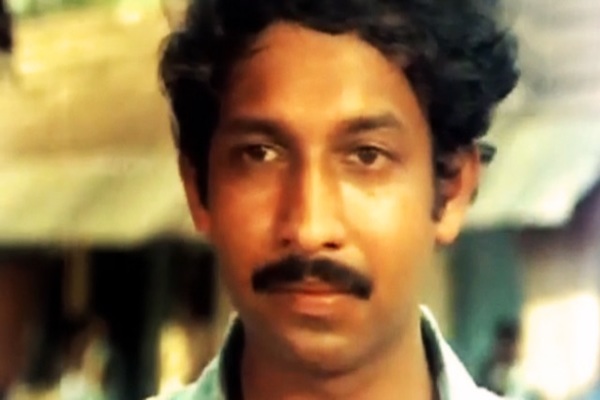03/02/2017
They aren’t so feted in actual life, but they’ve always played a vital role in our imaginary lives. Our fictional worlds in all genres across the world bear colorful testimonies to our fascination with them. I’m referring to a social category called thieves, who are abhorred and stigmatized in our social lives but have gone on to become enduring symbols of our own hypocrisies, decadence and inequities.
Malayalam cinema isn’t an exception either. The most recent filmy thief who went on to become a sensation was Meesha Madhavan, who was imagined very much on the lines of Kayamkulam Kochunni ; a Robinhood figure and an integral part of our folklore. Robbing the rich to feed the poor is an act we’ve empathized with as romantic and revolutionary. Jean Genet's The Thief's Journal has a gospel significance for many, and for the pious believers, Krishna’s theft of butter and even the attire of women is an endearing and holy act. Boundaries between the robber and the poet-saint blur in the legends of Valmiki and Angulimala. A recent film Urumbukal Urangarilla was scripted around an apparently sacred treatise to the thieves called Chorashastram or Art of thievery. But all such thievery had to have a noble edifying purpose of eliminating a higher evil. Padmarajan, on the other hand, didn’t want to sugarcoat the bitter pill of thievery in Kallan Pavithran. In a world of robber barons, Pavithran is a petty thief. His operations are small scale and ambitions don’t go beyond his neighborhood.
A film celebrated in its time for its story, plot and execution, Kallan Pavithran is a much cherished memory of Malayalee film buffs. But I would always remember it as a movie experience that ushered Kafka into my life. What has a Padmarajan flick got to do with that compelling modernist of 20th century fiction? Just a cursory mention in the popular film column of the day by the household name Kozhikkodan in Mathrubhumi weekly initiated me into the world of that enigmatic storyteller, whose name has become a byword for urban gothic with all its civilized horrors.
The year is 1981. How could a typical Malayalee village with no television or telephone and with the Ambassador car as the sole visible symbol of ultimate luxury have anything in common with the early twentieth century Europe? It’s a story woven around ordinary folk living in the “laksham veedu colony” where reside the poor, nursing and nurturing their rivalries, vigorously scheming to realize their small ambitions. Small to the middle and the upper middle classes, but precious to them as it’s also the story of their survival in an unequal world. The story and the treatment throbs with what we’ve come to laud as the Padmarajan touch with all its raw wit, coarse expressions and an uninhibited gush of libidinal force. A rush of male libido which implicates female sensuality as a web of evil and entrapment.
Brilliant performances by Bharat Gopi and Nedumudi are still the enduring spirit of this film. Gopi as Mammachan, a rice mill owner chasing his lost montha and kindi which he believes to be stolen by Pavithran. He wears his simplicity and gullibility as naturally as Venu does his sly intelligence and nouveau riche foolery. For a simple film about a petty thief, the movie carries some unforgettable sequences. A stunning performance by Adoor Bhasi struck me as powerful and haunting even within my limited exposure to the world of cinema as a 15-year-old schoolgirl. And the afterlife of the film has only borne out the truth of my adolescent intuition.
The plot is deceptively simple. A sudden rise to fame and prosperity of Pavithran after the disappearance of Mammachan's utensils sets the gossip mills ringing. This simultaneous theft and prosperity is plotted through the subtle undercurrents of sexual jealousy between Pavithran's wife Janaki and his mistress Damayanti (Bina). Damayanti decides to leave Pavithran and invite Mammachan to shack up with her, much to the chagrin of Pavithran. There is an openness and nonchalance in the way these switches in relationships are worked out totally beyond the shackles of middle class morality. But that doesn’t make it any less deadly and virulent. Female sexual power is imaged as dangerous , wicked and manipulative. When a romance starts to bloom between Pavithran and Damayanti's sister Bhama, we little realize that it’s a ploy to make him confess to the theft and bring back the boot; an incident which results in his downfall, infamy and imprisonment. The director caps the heartbreaking moment laced with humor with a tantalizing epilogue which warns men to stay away from 'loose' women in spite of being blessed with devoted and good wives. It’s the eighties and Malayalam cinema has obviously outgrown such techniques of moral lessons and messages; and the tongue in cheek tone is too conspicuous to be ignored.
But the Kafkaesque thrill and chill of the film lies elsewhere. And that’s the typical old world shop of antique vessels cheekily named 'pathrakkada' managed by the trader Adoor Bhasi who was tragically underutilized by Malayalam cinema. (Bharathan and John Abraham are exceptions to this.) Kaimal's intriguing entry and exit and Nedumudi's entry into the attic of the shop lends a Hitchcockian aura and effect. Endless stretches of brass vessels and art pieces in all their antique sheen and splendor, with deadly serpents slithering in and out of them together with the deft play of chiaroscuro heighten the mystery, the darkness and temptation. Basic instincts swaying between secrecy and surveillance playing out on Venu’s body and expressions defy epithets. Never before and after in Malayalam cinema has an everyday affair called pathrakkada been offered up as a gothic space inviting your imagination to dance wildly across centuries of loot and trade. Not all the horror films taken together have been able to strike that note of extraordinary terror and mystique, to invoke the scent of crime! Ingenious is the way Padmarajan has used the visual possibilities of an otherwise neglected space. And Vipin Das's cinematography remains etched in my memory decades after my first experience of the film. Attic is where memories and relics lie in disarray; sometimes forgotten and often repressed. And they have a way of re-entering the present through unexpected pathways.
Even more engaging is the way the film explodes the myth of the village as an idyllic space of goodness and perfect happiness. The village is not at all an idealized space in Padmarajan films. On the contrary it is a microcosm of all the demons within us...you see men and women in their elements here. Not at all a flattering picture. It’s a place ruled by poverty and deprivation and crime, and theft is the most natural recourse to a good living. Memories of mindless police atrocities are still vivid in the social memory as in the depiction of the police constable as stupid and dangerous in his threat '”I will beat you up, beat him up, beat up everybody" (ninneyum idikkum avaneyum idikkum ellavareyum idikkum.) This constant refrain, a throwback to the Emergency days shows up the policeman as a figure of ridicule; lampooned more by the fact that it’s the femme fatale who helps the police to trap Pavithran.
Social dynamics and gender dynamics compel the film to be revisited and also interrogate the much celebrated man-woman relationships in Padmarajan oeuvre. Despite its clever narration and slipping into predictable patterns often, the film pivots around the time old binary of the good and bad women. The sensuous assertive woman, dark and smoldering, as against the desirably submissive wife. Isn’t it time to see how this binary surfaces in his other lauded flicks ? Is there a glimmer of this in Clara and Radha or in the schoolteacher vs the runaway girls? But the deviant women are not stereotypes; they’ve narratives, complexities and layered histories. Subhashini as the younger sister swings across the spectrum of power-- a puppet in her sister's hands at one level and making a puppet of Pavithran on another. Maybe that’s the reason the renowned Kozhikkodan felt that the scene in which Damayanti's sister bends and breaks a young plantain tree had the power of a Kafkaesque symbol to convey the pathos in the destruction of a young dream.
Bhama is Pavithran’s nemesis. Why couldn’t his wife’s pativratyam save him from his tragic destiny is the irony Padmarajan leaves us with. He subverts his own epilogue! Is it because we are still in the big, bad, bold eighties?



